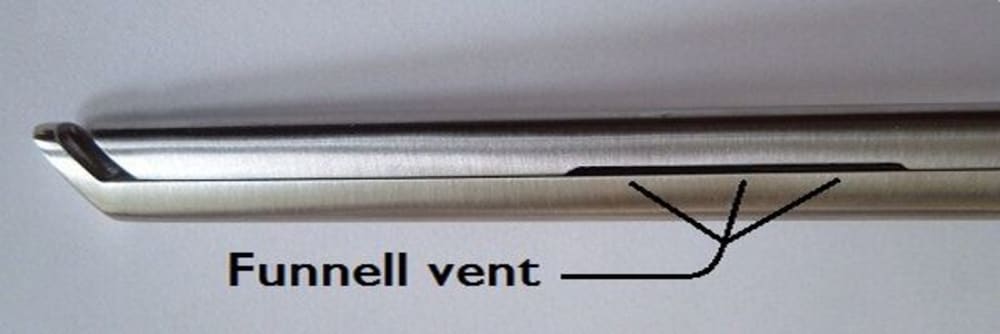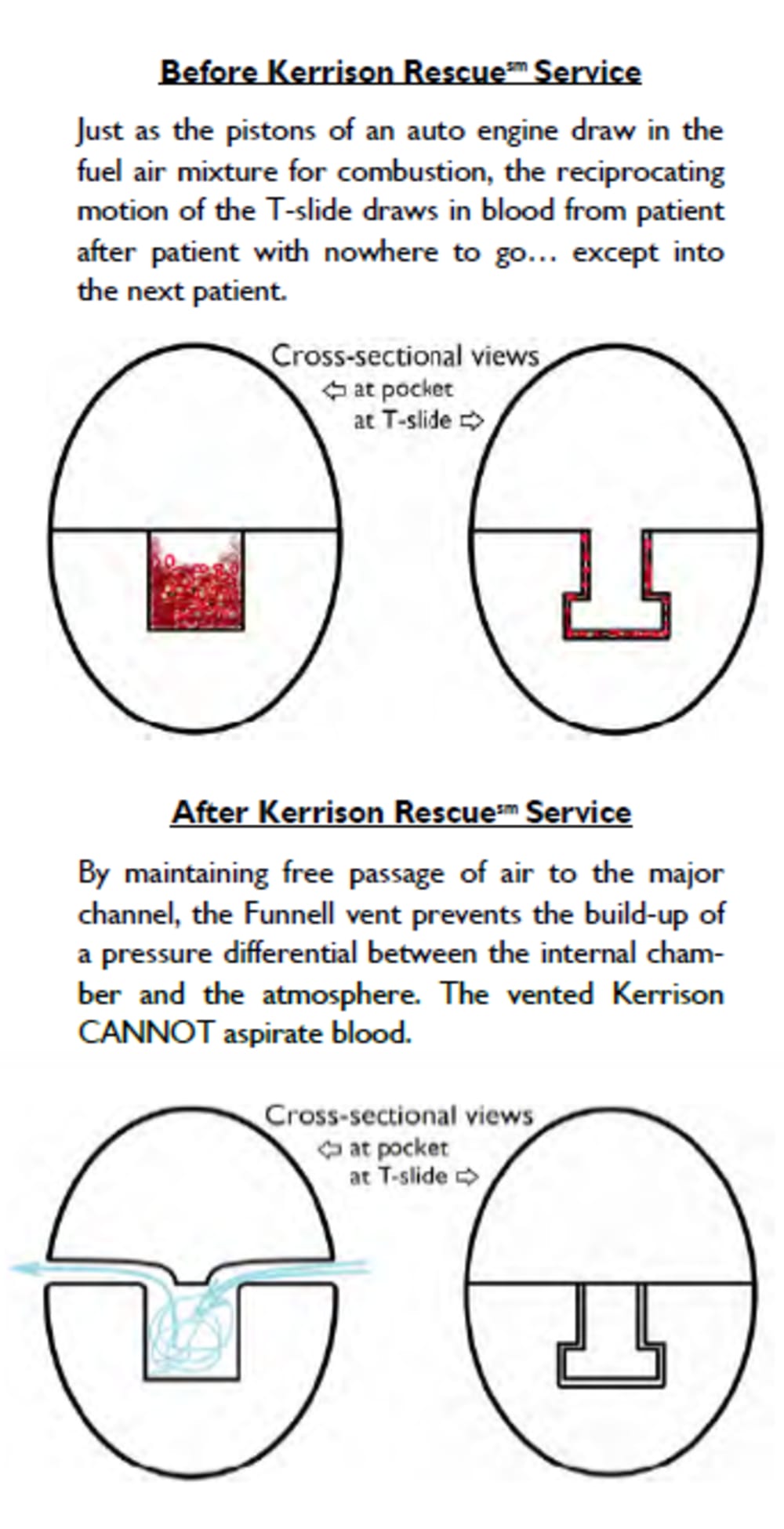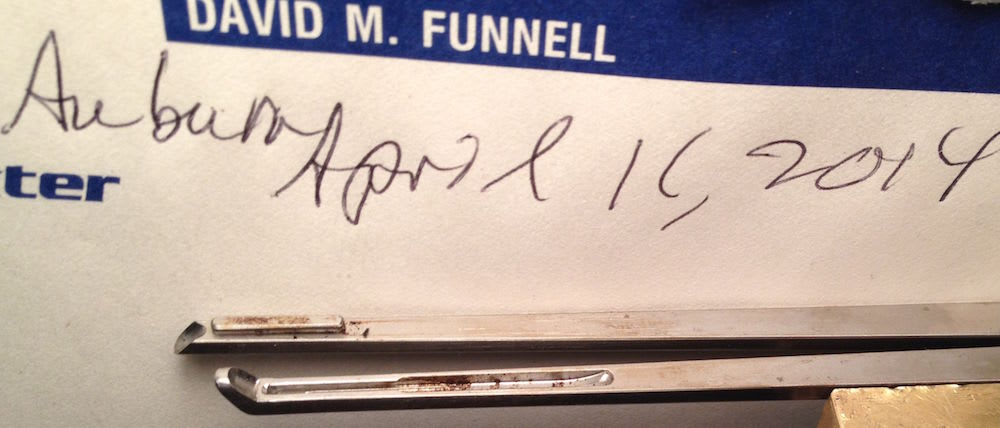For over a half-a-century, back surgeons have been cutting spinal disk cartilage and bone with Kerrison Rongeurs, whose original design for widening safely a cranial perforation was modified so that in spinal incisions, the tip could be introduced into ever-smaller spaces.
In such spaces where blood accumulates, jaws close on the target tissue but at the same time unavoidably blood seeps into the jaws as they are closing.
Over the past twenty years or so as the concern for contaminated instruments has drawn attention, manufacturers of this type of instrument have been busy conceiving of ways to make sure the internal surfaces of the Kerrison Rongeur can effectively be cleaned with minimum work in sterilizing.
While attending to the dis-assembly of Kerrisons for easy re-assembly, the fact had been neglected that the original assembly design affects the sliding action of the jaws in a compound way.
Not only is the top jaw accurately constrained to its sharp-edged mating with the cup-shaped “foot-plate” of the fixed lower jaw, but the internal tongue-in-groove construction necessarily increases the volume of a portion of the groove which accommodated the top shaft tongue during assembly.
Since the top shaft fits closely with the bottom shaft, the motion of tongue that closes the jaws creates a substantial suction force in the space proximal to the moving tongue, i.e., in the void where the assembly dropped the tongue into the wider groove. The result of this suction is that bio-matter is drawn up and back against gravity into that recess, where it collects.
Unfortunately, it is difficult to remove this soil material without undertaking a time-consuming and uneconomical disassembly of the rongeur. Historically, due to risk of contamination and spreading of pathogens or other contaminants, the rongeur should not have been, but has nearly always been used again.
However, one-time use of an expensive piece of surgical equipment is undesirable at best, and effectively impractical with rongeurs.
Instead of replacing existing, dangerous Kerrison Rongeurs, a viable – and accepted-as-preferable -- managerial alternative has now been created by me. The associated claims are approved by the U.S. Patent Office for issue this Spring (2105.)
Before Kerrison Rescue(sm) Service
Just as the pistons of an auto engine draw in the fuel air mixture for combustion, the reciprocating motion of the tongue draws in blood from patient after patient with nowhere to go… except into the next patient.
After Kerrison Rescue(sm) Service
By maintaining free passage of air to the major channel, the Funnell vent prevents the build-up of a pressure differential between the internal chamber and the atmosphere. The vented Kerrison CANNOT aspirate blood.
Blood that may run into the instrument will as freely be washed out in the decontamination room. The same manual syringe used for flushing instruments (such as laparoscopic) will forcibly eject any debris by washing the channel from left to right & from right to left. Both washer-sterilizer detergents and the autoclave steam easily contact the internal surfaces without taking these instruments apart.
Like this entry?
-
About the Entrant
- Name:David Funnell
- Type of entry:individual
- Patent status:pending








